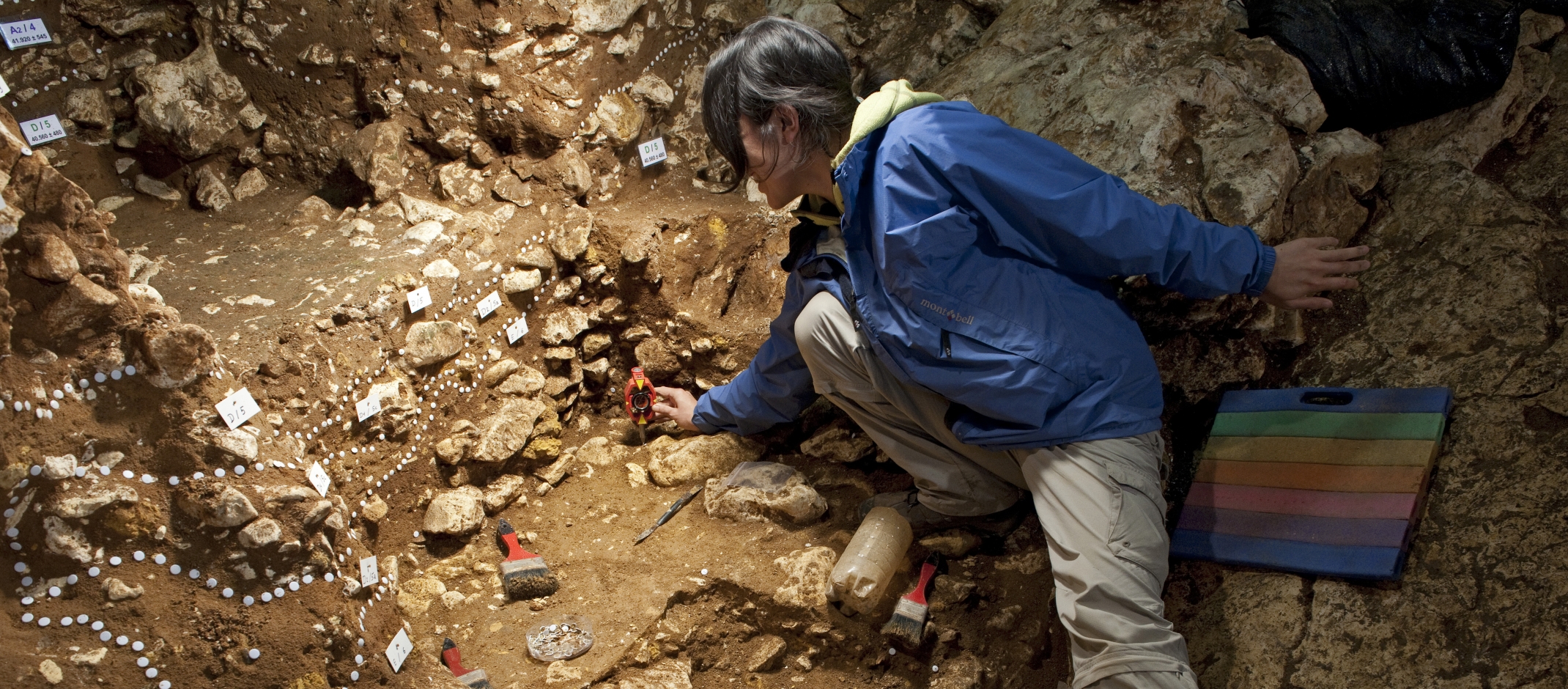Genetic traces of the woolly rhinoceros – in the middle of southern Germany

Did rhinos once roam Germany? Seriously: They did once live in the area, during the last Ice Age. This fact is documented by numerous finds of bones, and now genetic traces, too, that a team of researchers from Baden-Württemberg recently analyzed. Excavations by the University of Tübingen conducted in the 1930s in caves located in Lonetal valley (northeast of Ulm; Bockstein-Loch, Hohlenstein-Stadel), as well as excavations by the Landesamt für Denkmalpflege Baden-Württemberg completed in 2008 and 2013, unearthed nearly fossilized excrementsof hyenas from the Middle Palaeolithic (late Middle Palaeolithic,late Neanderthal period, about 45,000-60,000 years ago). New genetic analyses now reveal that the respective hyenas had eaten woolly rhinoceroses. The findings indicate that caves were not only important shelters for humans, but for animals as well.
In a collaborative project, researchers are working to reconstruct the flora and fauna of the late Neanderthal period in southwestern Germany. Fossilized excrements have proven to be an excellent source of data for this purpose. " Fossilized excrements are called coprolites. They look like rocks, but they are actually very porous, almost like pumice, and not completely fossilized", explains Laura Epp, a Konstanz-based environmental genomicist. Coprolites are like time capsules in that their content is protected from contamination and provides compact information about the animals that produced them as well as their food: digested animals and plants that lived during the Ice Age.
© Landesamt für Denkmalpflege Baden-Württemberg5 cm wide Coprolite. Coprolites are nearly fossilized excrements. They are an important source of genetic data. This coprolite was found during excavations at the Hohlenstein massif. Copyright: Landesamt für Denkmalpflege Baden-Württemberg
A team led by Laura Epp at the University of Konstanz was able to prove genetically that these excrements contain DNA from the woolly rhinoceros. Thus, hyenas must have preyed on and eaten woolly rhinoceroses. The team of researchers was not only able to document that hyenas and woolly rhinoceroses had once lived in southern Germany, they were also able to completely sequence the mitochondrial genome of the European woolly rhinoceros for the first time. This makes it possible to draw conclusions about the family tree of the European woolly rhinoceros and the relationship to its Siberian relatives.
Searching for traces of the past
Konstanz biologist Laura Epp specializes in reconstructing the past: She uses genetic deposits in sediments from bodies of water or from excavations to deduce what flora and fauna looked like thousands of years ago. Residual DNA from animals, plants and algae reveal a great deal about life and the coexistence of species in earlier geological eras. Laura Epp was, however, surprised to find relatively well-preserved traces of a woolly rhinoceros in fossilized excrement.
The researchers drilled into the coprolites and analyzed the DNA they contained using gene sequencing. The genetic puzzle contained material from two animals – the hyena as well as the woolly rhinoceros that it had eaten. A second sample from another cave in Lonetal valley yielded very similar results: another hyena and another rhinoceros that had been eaten.
The genetic family tree of the woolly rhinoceros
Previous bone finds had already documented that woolly rhinoceroses must have once existed in southern Germany. Now, for the first time, researchers have sequenced the mitochondrial genome of the European woolly rhinoceros. This "genetic map" makes it possible to draw conclusions about the species' family tree.
"We found that this European woolly rhinoceros is genetically relatively distantly related to all of the Siberian woolly rhinoceroses that have been sequenced so far", explains Peter Seeber from the Konstanz-based team: "Molecular dating suggests that the maternal line of our European woolly rhinoceroses separated from its Siberian counterparts several hundred thousand years ago – which coincides to the time of the earliest fossil finds in Europe about 400,000 years ago." This could mean that, starting at this time, a stable population had lived in Europe separated from the Siberian population. Additional genetic samples – not just from bones – could be used to generate a more precise picture of the history of the species.

"It's a bit crazy that we have reconstructed the first mitochondrial genome of a European woolly rhinoceros purely from the fossilized excrement of a hyena. This indicates that we have a wide range of possibilities to obtain genomic data – even from samples that, at first glance, have nothing to do with the organisms themselves."
Laura Epp, junior professor of environmental genomics in aquatic systems
This research helps reconstruct the past and trace the evolution of species. The genetic search for clues could also reveal the influence of geological events (e.g. climate change during the Ice Age) on organisms, in order to ultimately understand why the species developed the way it did and why it became extinct. "In addition, we can only understand the adaptation of Pleistocene hunter-gatherers to fit their environment by reconstructing the surrounding landscape as comprehensively as possible", says Yvonne Tafelmaier from the Landesamt für Denkmalpflege Baden-Württemberg.
The next step for the researchers is to reconstruct the flora of the past. The coprolites contain animal as well as plant DNA and the remains of digested pollen. By looking at these other components, the research team hopes to more precisely place the embedded sediments within the history of the changing climate conditions during the last Ice Age and to better understand the behaviour of late Neanderthals.
Coelodonta antiquitatis is the scientific name of the woolly rhinoceros. The species died out in Siberia about 14,000 years ago. The closest living relative of the woolly rhinoceros is the Sumatran rhinoceros, which lives in the tropical rainforests of Southeast Asia and has almost been completely wiped out.
Cover image: Keiko Kitagawa during the excavation in the Lone Valley in southern Germany. Copyright: Landesamt für Denkmalpflege Baden-Württemberg

